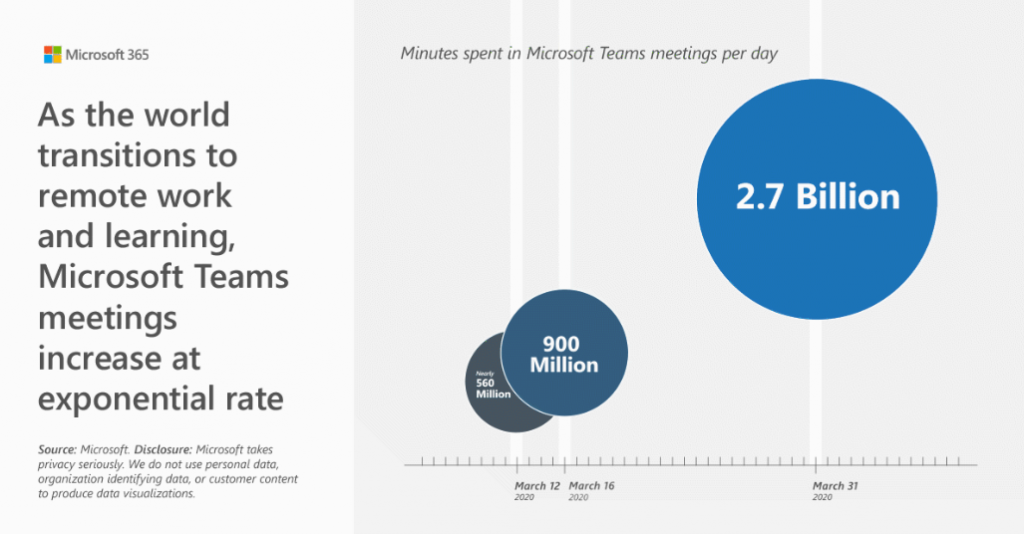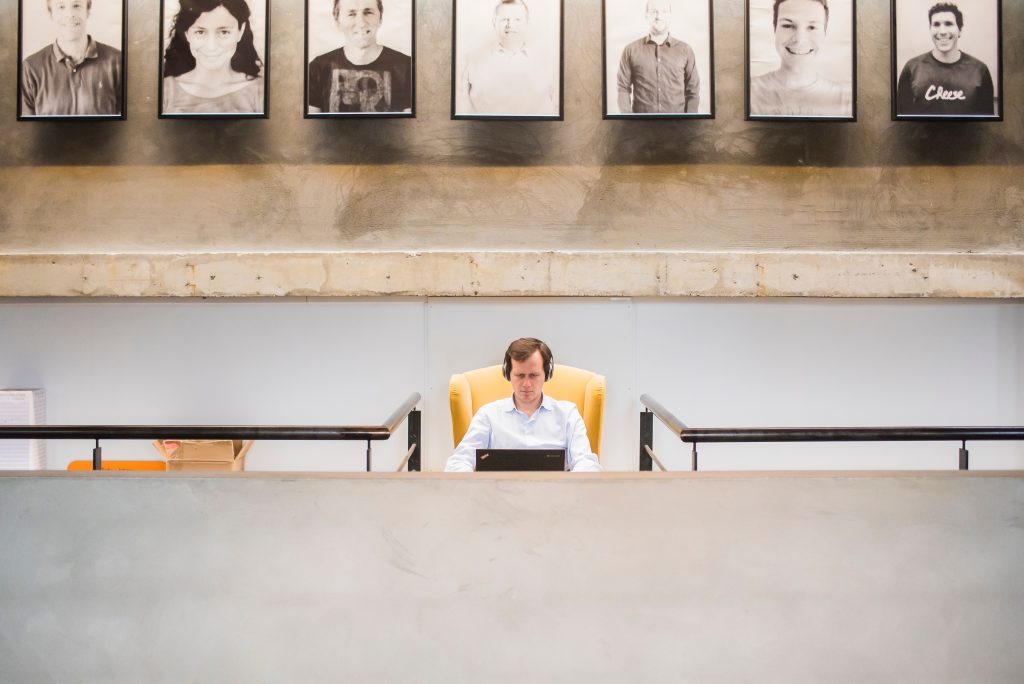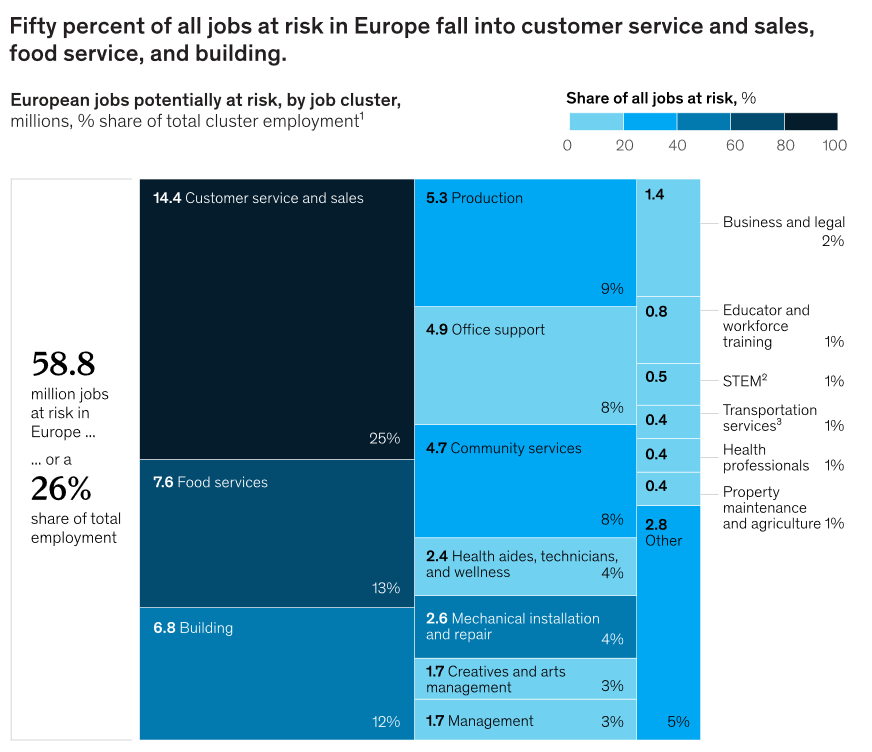#1. As economies begin to re-open, companies are planning to test workers on COVID-19
While in some areas of the world the COVID-19 pandemic is yet to reach its peak, economies in Europe are slowly beginning to re-open. Countries such as Germany, Denmark, the Czech Republic, Norway, and Poland have started lifting some restrictions this week, while Italy and Spain move at a slower pace. In the meantime, companies that are returning to the new normal are investing in making sure workers who are returning to their offices, production sites and other workplaces can do so safely. Among others, Ferrari has launched a voluntary scheme called “Back on Track” through which employees, families, and suppliers will get tested on COVID-19 before returning to work. Similarly, Amazon wants to test all 840,000 employees and the company is also building its own testing capacity to speed up the process.

#2. Microsoft’s Work Trend Index: How we work during the pandemic
Microsoft has published its latest work trend index that keeps track of how work is evolving in the changing world. Not surprisingly, the index focuses on the recent changes triggered by the COVID-19 outbreak which has significantly altered our productivity. Having analysed trillions of signals from meetings, emails, and chats, the company has identified the following interesting trends:
- As millions of people around the world have switched to working remotely full-time, it’s no secret that collaboration platforms such as Microsoft Teams have seen a boom. So much so that on 31 March, Microsoft Teams saw a new daily record of 2.7 billion meeting minutes in one day.
- Working remotely also means more people being eager to use video during calls to make the interaction more personal. According to the Index, the number of people who are turning on video in meetings during the pandemic have increased significantly. Total video calls in Teams grew by over 1,000% in March.

#3. Earth Day: Will corporate values on sustainability change post COVID-19?
On Earth Day this week, Yale University organized the Yale Business Sustainability Summit to mark the 50th anniversary of the beginning of the modern-day environmental movement. Other than taking place virtually due to COVID-19, the Summit was a reminder of the shift in tone on the issue of sustainability for many countries and companies. According to Fortune, environmental issues have previously been considered a side issue, burden, or obstacle, but today they are seen more as a core element of most business strategies. CEOs of leading companies such as Unilever, Honeywell, or Walmart who participated in the summit call confirmed that the change in the general discourse over the decades has also been reflected at the C-suite level.
Going forward, the question that is on everyone’s mind, however, is how COVID-19 will impact sustainability in the post-pandemic world. The way we work has changed for good and some of the practices we have adopted as a necessity, notably less commuting through more remote work or fewer business trips through more use of digital solutions, could have a positive environmental impact on the planet if they become the new normal.

#4. Harvard Business Review: Three ways how labour market is changing due to coronavirus
The outbreak of COVID-19 has forced organizations into perhaps the most significant social experiment of the future of work in action, with work from home and physical distancing policies radically changing the way we work and interact, writes Harvard Business Review. But on top of the changes to where we work, many workers have also had to adjust to what work is performed and how. To make the most of these developments, the HBR article offers three solutions to how companies could shift work, talent, and skills to where they are needed most.
- Make work portable across the organization: this means, companies should move people to the most mission-critical work as fast and efficiently as possible. For instance, Bank of America has retrained 3,000 of its employees to deal with the record number of calls from consumers and small business customers.
- Accelerate automation: automation is not a job-killer but rather a mandatory capability to deal with the current crisis. Customer service centres or utility companies such as GE have expanded the use of automation to serve more customers and keep employees safe.
- Share employees in cross-industry talent exchanges: one way of helping both companies in need of workforce and employees without work in search of a job is to create a cross-industry talent exchange. This innovative solution has already helped the supermarket chain, Kroger, to temporarily borrow furloughed employees for 30 days from Sysco Corporation.

#5. McKinsey study: Nearly 60 million European jobs are at risk
Staying with the topic of coronavirus, according to the McKinsey study, more than 58 million jobs in Europe have been put at risk due to the current pandemic. Half of those are in the arts, entertainment, accommodation, and food sectors. This amounts to 26% of total employment in the EU27 states. Employment in small and medium-sized enterprises is particularly exposed to the crisis. The paper lists a set of steps that companies and governments should take in order to mitigate the impact, namely applying effective health and safety protocols, investing in enabling remote work where possible, and to provide incentives for the temporary redeployment of workers.




